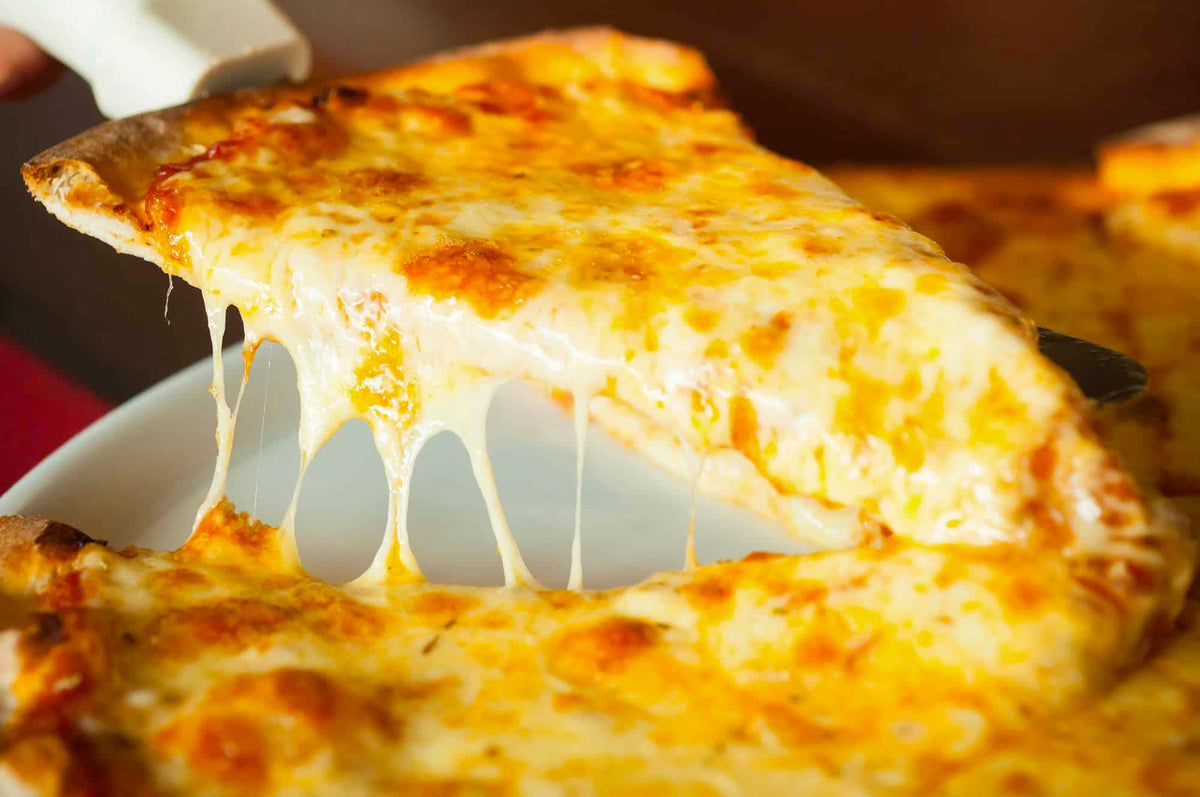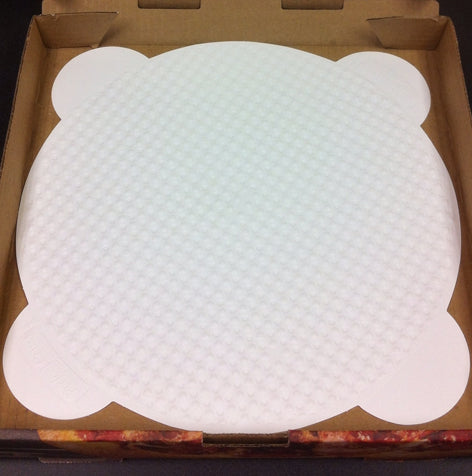An Exposé on Pizza From Around the World

Pizza is one of the world’s most popular fast foods. It’s readily available in restaurants, on street corners and even at home if you don’t mind doing some cooking.
When you think about a pizza, what comes to mind? You probably picture a mass of gooey cheese garnished with your favorite toppings, all resting on a bed of sauce and crust. But did you know that some pizzas actually have toppings like kimchi or pine nuts, as well as interesting sauces including ketchup and crème fraîche? It might surprise you how different pizza looks in countries around the world.
A Brief History of Pizza
What we think of as pizza actually developed in antiquity. Several thousand years ago, people enjoyed the basic concept of pizza – a selection of toppings on bread. The ancient Etruscans ate a leavened flatbread piled with cheeses, onions, garlic and sometimes pork. In ancient Persia, flatbreads had a topping of cheese and dates.
The import of tomatoes from the Americas to Europe during the 16th century completely changed the pizza game. Bakers in Naples began to add tomatoes to their yeast-based flatbread – since tomatoes were cheap, it became a tasty way to feed the poor. Word spread about this tasty dish, and people actually came to Naples to try out this new culinary invention.

Pizza became so popular that it became widely available on the streets throughout Naples. People enjoyed the dish at all times of the day, even during the morning for breakfast. People from other parts of the Italian world, including Rome and Sicily, started to put their own spin on pizza, using different ingredients and baking styles to change the consistency and taste of the bread. They also used local cheeses to differentiate the flavor of their pies.
In modern times, pizza is everywhere. Whether you prefer to cook it yourself or have it delivered fresh from a pizza delivery bag, it’s easier than ever to enjoy a piece of your favorite pie. You might be wondering how your pizza would look to someone from another country. While the concept of a flatbread topped with savory or sweet items may have its roots in Italy, there are many different variations of this dish found in many different countries. Read on to get a glimpse of what pizza looks like around the world.
From the Motherland: Italian Pizza by Region
Pizza is practically synonymous with Italy. It’s one of the country’s culinary claims to fame, and Italians are very proud of their delicious creation. The first mention of the word “pizza” was in a Latin text from the first millennium, and the Italians are quite proud to claim pizza as their invention. Throughout the country of Italy, you can find pizza both in formal and casual settings. Sometimes it’s presented whole and sometimes it’s cut into wedges that you can eat on the go.
While modern pizza evolved from traditional flatbreads in Naples, there are many tasty variants found all over Italy. The Sicilians added their own twist by thickening the crust. In Rome, cooks developed a pie with a crispier crust that sometimes has a cracker-like texture. Here are a few of the tasty regional pizzas found in the “Bel Paese.”
- Neapolitan (Naples): Naples-style pizza, or Neapolitan pizza, is one of the most famous Italian foods. You don’t have to wait long to enjoy this food. It’s cooked quickly in a wood oven for only 90 seconds – just enough time to give the crust a fluffy texture inside with some crispiness on the outside. The Neapolitans use either San Marzano tomatoes or Pomodorino del Piennolo del Vesuvio and creamy cheese made from buffalo milk. A few fresh basil leaves sprinkled on top add some greenery to the pie. The colors of the pizza reflect those of the Italian flag.
- Sicilian (Sicily): The Sicilians developed a unique take on pizza, also known as sfincione. It’s characterized by a thick, spongy crust as the base as well as a topping of breadcrumb, onions and a special cheese called caciocavallo. This delicious variety is often found in bakeries rather than in pizzerias. It’s a great street food to enjoy on the go.
- Pizza alla Pala (Rome): The Romans use an electric oven to cook their pizza. It makes the crust much different than the crust Neapolitans enjoy. Long-rising dough gives this pizza its trademark crust with a crispy exterior, yet soft interior. It’s traditionally presented on a small wooden paddle.
- Pizza Tonda Romana (Rome): Tonda means round in Italian. When you order this pizza, you’re getting a whole pie. Pizza Tonda Romana is the most common pizza found in Rome. Its cracker-like crust, made by adding oil to the dough, makes this pie unique from other varieties found throughout the country.
While pizza originated in Italy, it’s clear that each region has their own special twist on this favorite dish. They differ not only in terms of crispness and density of the crust, but also in some of the cheeses that are used. Locals of each region will tell you that they’ve perfected the art of pizza making and that their version is the best. One thing’s for sure – you’ll never forget the experience of enjoying an authentic pie from each of these unique regions.
A Tale of Four Cities: Pizza in Chicago, New York, Detroit and Los Angeles
With a nation as diverse as the United States, it’s only natural that there are plenty of different options to satisfy your pizza craving. Just how did it get to America, though? While pizza arrived with Italian immigrants who came to America in the 1800s, it didn’t really gain popularity until around the 1950s. Soldiers stationed in Italy couldn’t get enough of the stuff during World War II, and they brought their love of the pizza pie back to the States upon their return. It’s been an incredibly popular food in the United States ever since.
There are so many styles of pizza to enjoy throughout the United States. From the sky-high deep dish slices that characterize Windy City fare to the square-shaped pies popular in Detroit, every region makes pizza a little bit differently. Here’s a breakdown of some of the main variations you’ll find throughout the country. Remember, that you don’t need to travel to these cities to enjoy some of these delicious varieties.
- Chicago Deep Dish: Extra-thick Chicago-style pizza features high sides to contain the toppings. Inside is a generous helping of cheese with a tangy tomato sauce on top. Due to the thickness and density of a typical Chicago pie, usually one healthy slice is enough to fill you up.
- New York Slice: New York-style pizza follows the Neapolitan tradition. The addition of sugar and olive oil to the dough gives the crust a foldable yet crispy texture. The cheese is typically low-moisture mozzarella, as opposed to the fresh slices you’d see on a Neapolitan pizza.
- California-Style: Pizza from the Golden State combines the New York and Italian thin crust traditions, but the toppings make this version of pizza unique. It’s all about freshness when it comes to the toppings. California-style pies usually have chicken, peanut sauce, artichoke hearts and other non-traditional toppings.
- Detroit-Style: Often referred to as “upside down” pizza, Detroit-style pizza makers spread the sauce atop the cheese. Speaking of cheese, Detroit-style pies traditionally feature Wisconsin brick cheese. The crust is typically extra-crispy on the edges and chewier in the center where it meets the cheese.
Pizza paints an interesting portrait of American taste buds. While not achieving mainstream popularity until after the War, the delicious pizza pie is now entrenched in America’s culinary culture. With so many pizza varieties to try, it’s clear that Americans won’t end their obsession with this fast food any time soon.
Variations on a Classic From Around the World

The basic concept of pizza is bread, toppings and sometimes sauce. This combination is also appreciated in other parts of the world, including places with very unique culinary traditions like Korea and Japan. The ingredients of a typical pizza in these countries are usually ones that are popular with the locals. The meats and vegetables available in the region are the typical toppings. By modifying the Italian invention, billions of people are able to experience this delicious food in a way that truly reflects their own distinct culinary history and tastes.
Each country has their own unique way to make pizza, but they also typically enjoy the dish at different times of the day. Because pissaladière is typically made fresh as a lunchtime appetizer, you aren’t likely to see too many pizza delivery bags in France. On the other hand, Georgia’s version of pizza is often enjoyed in the morning as a breakfast staple. Check out these interesting variations of the pizza—some of them might really surprise you.
- Poland: Zapiekanka is the Polish version of pizza. It uses one half of a baguette as its base. The bread is topped with cheese, mushrooms and a healthy dose of Polish ketchup. You can add other ingredients like olives, feta cheese or try it Hawaiian style with pineapple and barbecue sauce for a unique twist.
- Georgia: Georgia’s take on pizza, called adjaruli khachapuri, has an interesting shape. It’s baked with cheese and eggs and looks like a little boat. It has a cheese blend of mozzarella and feta or traditional sulguni and imeruli The combination of soft bread, tasty cheese and a runny egg is enough to tantalize your tastebuds.
- Lebanon: The locals in Lebanon enjoy pizza as a breakfast food. Standard pizza dough forms the base of Lebanese manakish, with za’atar seasoning – a combination of thyme, oregano and sesame seeds – and a liberal helping of cheese and meat for a savory flavor.
- Turkey: In Turkey, pizza takes the form of a traditional flatbread. It’s known as lahmacun or lahmajoun and is topped with spicy minced meats like lamb or beef. A garnish of tomato, onion, lettuce and lemon provide brightness to this favorite dish.
- France: If a savory snack is what you’re after, you’ll find it in France with their version of pizza, called pissaladière. This savory dish is similar in form to a typical French tart and is usually enjoyed as a light lunch or snack. The bread dough has a thick consistency and features a mixture of caramelized onions, black olives, anchovies and anchovy paste.
- Germany: German pizza, or flammekueche, means “flame cake.” It’s a thin and crispy pie that features some interesting toppings, including crème fraîche, bacon and thin-sliced onions. This savory meal is one of the most famous specialties of the French-German border region of Alsace.
- Spain: The Spanish word for pizza is coca, and what’s unique about this pie is that its typically served at room temperature. An olive oil-soaked crust forms a sturdy base for a variety of savory or sweet toppings. Favorites include mushrooms, spinach and even more interesting options like pine nuts and citrus rind.
- Japan: Okonomiyaki is Japan’s take on pizza, and you’d be right in thinking it resembles a kind of savory pancake. There’s a lot of flavor going on here, as okonomiyaki is piled high with a variety of seafood toppings and savory sauces, including the popular kimchi.
- Korea: Korean pizza, or bulgogi, is a fusion of Western-style pizza and Korean barbecue. Marinated barbecued beef tops a traditional pizza dough and vegetables like peppers and corn are added for freshness. The finishing touch is the well-loved bulgogi sauce of white wine, sesame oil, oyster sauce and sugar.
- Argentina: You wouldn’t be too far off if you consider Argentinian pizza very similar to a chewy focaccia bread. Originating in Buenos Aires, fugazza con queso consists of a thick focaccia-like dough topped with caramelized onions, oregano and occasionally mozzarella.
Cooks around the world, both amateur and professional, have put their own spin on what we know as the pizza. They continue to innovate and add regional ingredients, cooking methods and flavors to create a dish that they can truly call their own.
What About Stromboli and Calzones?
Pizza is generally very portable, but did you know that there are even more convenient ways to enjoy that delicious combo of crust, cheese, sauce and toppings? That’s where pizza-derivatives known as Stromboli and calzones come in. These baked “pockets” have a leavened dough crust and look like a traditional turnover. Both Stromboli and calzones are sandwich-sized, allowing you to easily enjoy them on the go. You might think that these two sandwich-style foods are exactly the same, but there are actually some key differences between the two.
What is Stromboli? It’s a baked turnover that’s loaded with a variety of Italian cheeses, with mozzarella taking the star role. In addition to plenty of cheese, you’ll also find Italian cold cuts, including salami, bresaola, capocollo and many more. In some cases, fresh vegetables are also thrown into the mix. As far as the crust goes, a typical Stromboli features traditional pizza dough that’s covered in a light egg wash to make sure the dough stays out. Oh – there’s also typically some rich tomato sauce tucked inside. Italian-American cooks from Philadelphia actually invented Stromboli. It’s become a treat that Americans and pizza-lovers worldwide have enjoyed ever since.
Calzones, on the other hand, are a completely Italian invention. They originated in Naples as a casual way to enjoy the flavors of pizza. Like traditional pizzas, calzone recipes differ from region to region. Stromboli and calzones share similar ingredients. It makes it a bit confusing to differentiate between the two tasty turnovers.
What makes a calzone different from Stromboli? They feature many of the same ingredients, and they generally taste like pizza, so what’s the difference? Primarily, the difference is in the shape. Calzones are always folded into a crescent shape, while the Stromboli is usually rolled and takes the form of a cylinder. It’s helpful to think of a calzone as a taco and a Stromboli as a burrito.
One other major difference is that you will never find tomato sauce inside the dough of a calzone. The sauce is always on the side, allowing you to dip to your liking and make every bite the perfect one.
Pizza is a Well-Traveled Dish, No Matter How It’s Made
Pizza is, and always will be, a food that enjoys very wide appeal. For such a simple food, it’s clear that people around the world have added their own style and flavors to change the definition of what makes a pizza. The great thing is that pizza can be almost anything you want it to be. Whether you enjoy classic fresh mozzarella or something more exotic like kimchi on your pie, there’s a perfect flavor out there for everyone. As long as there’s bread and a topping, you’re getting a taste of delicious pizza. The next time you open the door to a driver holding a pizza delivery bag, keep in mind that the pizza they’re delivering might look very different depending on what part of the world you’re in.




